
How to Perform a Technical SEO Audit?
SEO is a great method to get more people interested in your business. Every time Google makes a major shift in its ranking algorithm, it affects every website.
And every time that happens, you have to run a technical SEO audit. Audits can ensure you're still doing everything right. Technical SEO audits are critical to business success.
It gives you a chance to dig deep and find important insights about your business. If you want your website to rank higher in search results, you must perform SEO audits regularly. You risk completely falling off the map if you don't do this.
Let's look at a few ways to conduct effective SEO audits for your business.
9 Tips to Perform a Technical SEO Audit
1. Check For Mobile-Friendliness
Traffic on mobile devices has been rising for a long time now. Today, it has even outperformed other sources of web traffic. Many website owners have implemented mobile-friendly web design to serve users better searching via mobile.
Tips To Improve Responsiveness
When a website can change its display to different device screens, it's called responsive design. Google considers responsive design as one of the cornerstones of ranking. Websites that have this property are pushed up the rankings.
A mobile-friendly website is designed to be accessible on desktop PCs and mobile devices. It will display content at its intended size, so it is easy to read and navigate for users. The key is to find the balance between display and screen size.
- Gridset is a great tool to improve your responsive design. It makes your website much more aligned to mobile screens.
- Adobe Edge Inspect is a premium tool and is popular with the community.
- Bootstrap helps you find and configure great-looking front ends for your website.
Here’s a screenshot of Gridset:
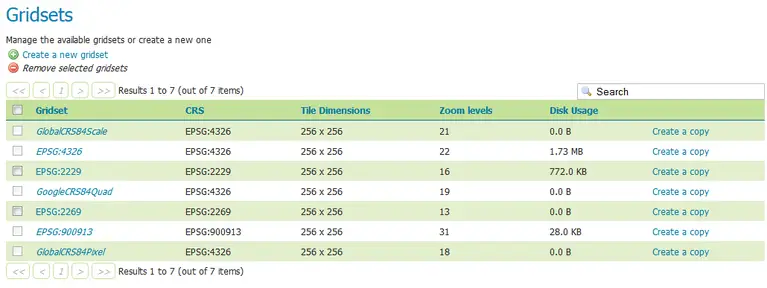
2. Inspect Crawlability And Indexing Errors
A technical audit will tell you if there are any crawlability errors or indexing issues that you can easily fix. This type of audit can also highlight pages on your site that aren't optimized for searches. It also underscores which pages you can target to improve your SEO.
Strategies For Better Indexing
For a website to do well on searches, it must first be indexed. Only after it is done will people be able to access it. An SEO audit checks for any issues on your website about this aspect.
The audit can unearth various issues about your website, especially crawl errors. Depending on the granularity of the report, you can also find the solution.
- One of the most popular tools is the Screaming Frog SEO Tool. This can highlight a lot of indexing errors for your website.
- Moz Pro is another platform with a good crawl and indexing error highlighting module.
- Ahrefs also gives you good insights into how you can correct crawl errors.
Here’s a screenshot of Screaming Frog:

3. Optimize Website Loading Speed
Loading speed is, without a doubt, one of the most critical parts of website development. The quicker your website loads, the better your chances of placing it ahead of your competitors. People also have less patience for slow-loading websites in the highly competitive marketplace.
Focus On Website Loading Speed
When people visit your site, they're looking for information. They may have questions, and they'll want answers quickly if they have questions. If you want your visitors to stay on your website and convert them to customers, you need to ensure that your site loads quickly.
The speed of your site depends largely on the size and complexity of your website. You need to tweak and tinker with every aspect of your website to improve loading times. Several tools can help you do that.
- The popular Google PageSpeed Insights is a tool every marketer and developer uses. It is easy to use, and it's free.
- You can test your website ping at different locations using Pingdom Tools.
- GTMetrix is another popular option for testing your website loading speeds.
Here’s a screenshot of Google PageSpeed Insights:

4. Streamline Internal And External Linking
As a business, if you want your website to stand apart from your competitors, you need a good linking profile. Your linking profile needs to be optimized for both internal and external linking. This can lead to better opportunities and a larger customer base.
Optimizing Linking Profile
Link building has been a foundation for better SEO performance over the years. An optimized linking profile has authority backlinks, a great source of traffic and conversions. For a link-building profile to improve, internal and external linking is necessary.
The quality of your backlink profile is one of the most important factors influencing the success of your SEO campaign. Backlinks are highly relevant to search engines, and they're the primary factor contributing to higher rankings.
- Ninja Outreach is a great tool for helping with link building for your website.
- Linkody helps you track backlinks with great accuracy and insights.
- If you're looking to scale your link-building campaigns, BuzzStream can help.
Here’s a screenshot of Linkody:
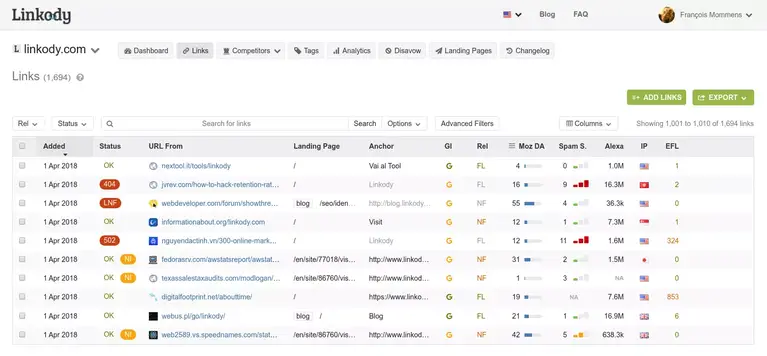
5. Improve Image And Alt Text Optimization
Images are important for every niche of business. But something as important is optimizing the images for search engines. Optimization of images involves the image itself and the metadata, which is the SEO part.
Tips For Improving Image Use
The image and alt text are critical factors for optimizing website content for search engines, impacting the user experience. While the search algorithm changes often, the most important thing is to make sure that your website is optimized for it.
Reducing image size can mean improved website loading speeds. Adding alt text can give your images context on searches. Combining them can be hugely effective in creating a cohesive image optimization pipeline.
- JPEG Optimizer is usually the first choice for many people. It is simple and intuitive to use.
- Compressor.io is another tool that can help you improve image properties.
- SEMrush is a great platform for auditing image alt tags.
Here’s a screenshot of JPEG Optimizer:

6. Check For Content Duplication
Content duplication is one of the most common SEO problems. This occurs when two pages on a site contain the same content. Duplicate content has many implications on a website, including decreased rankings, traffic loss, and lower conversion rates.
Avoiding Identical On-Page Content
Duplicate content is an issue that every business and website owner must know. If you aren't careful, duplicate content on your website could affect your search engine ranking. It can also happen naturally.
An example - a webmaster edits content on one page. They forget to make changes on other pages that point to the same content. Another reason for duplicate content is that you set up your content management system with automatic publishing features.
- The most common tool for duplicate content is Copyscape. It is cheap and powerful.
- Siteliner can help reduce content duplication errors across your website.
- PlagSpotter is another platform that can help you spot identical content.
Here’s a screenshot of Siteliner:

7. Audit Your Website Security Protocol
For a business website, having a strong website security protocol in place is a necessity. But unfortunately, many owners and IT departments overlook their website's security protocols. The more secure your website is, the more people are willing to engage with you.
Tips For Better Security
A poor security protocol can result in the loss of revenue and customer confidence. Even a minor security breach could cause a severe loss of trust and reputation among your current customers. Plus, it could put your company at risk of being targeted by hackers and cybercriminals.
You need to keep your website ahead of these issues and get the most out of your security protocols. Always ensure that you invest in protecting your website's and user's data.
- Audit each plugin on your website on a case-by-case basis.
- If you're using a CMS, ensure that you have the latest version.
- Opt for HTTPS protocols over other less secure alternatives.
Here’s a screenshot of updating a plugin on WordPress:
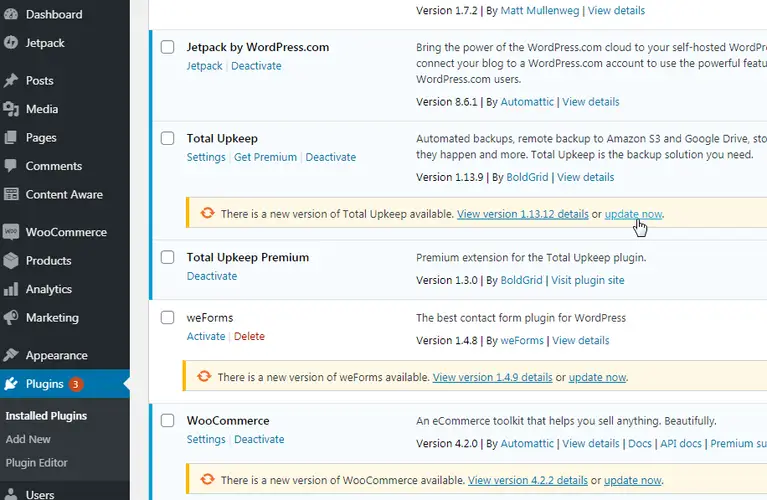
8. Inspect Website Architectural Errors
Website architecture is a critical part of the business. A technical audit focuses on how the website is structured, site hierarchy, and URL structure. It also gives you insights into fixing your sitemap and robots.txt.
Strategies For Optimized Site Architecture
There are several things to look at when it comes to website architecture. The first thing would be the website structure. It determines how a website is organized and how the pages are arranged. A rule of thumb is that it should take a user three clicks or less to get what they want.
URL structure, Sitemap, and robots.txt are more critical technical fixes for a website. These are vital settings that can make or break your website. You need to handle them with care and read them before tinkering with them.
- Having a clear idea of what you want to accomplish with your website can improve website structure.
- You can generate a sitemap for your website with Slickplan. It is a visual tool, so easier to use.
- Test your robots.txt file with Google's robots.txt Tester. You can also submit your robot's file there.
Here’s a screenshot of Slickplan:
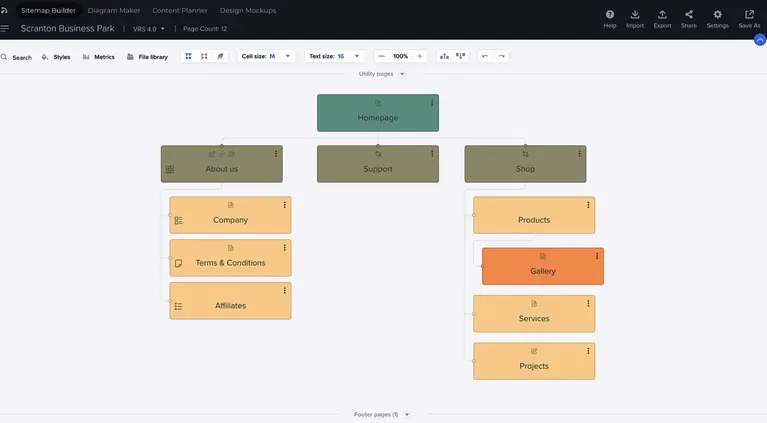
9. Check For Website Code Issues
A good part of an SEO technical audit is about website code. Code quality is extremely important to any website. If you've ever worked with code and web development, you know that code quality is critical. It especially affects performance, accessibility, SEO, and the overall user experience.
Tips For Better Coding Standards
All websites are built on a foundation of code. And if you want to streamline your website, you need to optimize the coding. There are several parts of the code that you need to focus on. HTML, CSS, JavaScript, and Meta tags need to be looked into.
A properly coded website will perform better than a poorly coded website. And it's not just about the looks of your website. Your website's coding also determines how fast your site loads and how often Google can index your website.
- A standout tool for a simple text editor is Atom. You can use it to create and edit backend code.
- BootStrap gives you a huge list of external libraries that you can use for development.
- There are also code snippets and other tools you can use on GitHub.
Here’s a screenshot of Atom:
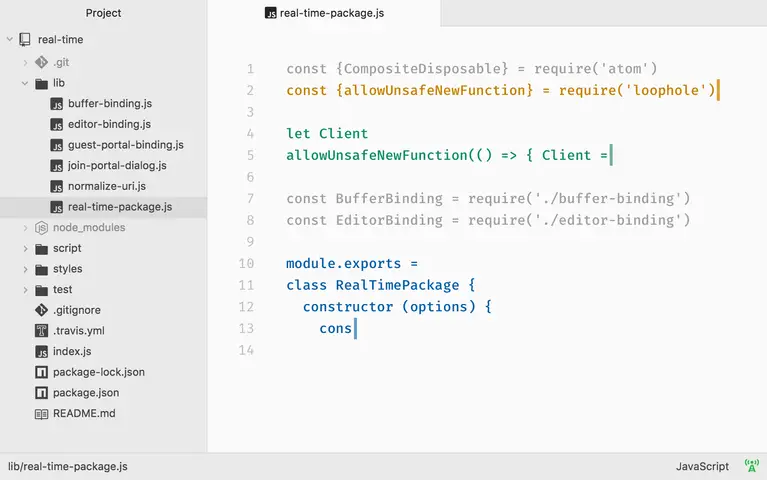
Technical SEO Audit - FAQs
1. What Is A Technical SEO Audit?
A Technical SEO Audit is a way to analyze your website's technical elements and ensure that they are functioning properly. It includes auditing various parts of your website to ensure improved SEO performance.
2. How Long Does A Technical SEO Audit Take?
The duration of a technical SEO audit can vary depending on your website and its size. The average time taken for an audit is around three days. For a complex website, it can sometimes take upwards of 2 weeks.
3. Is It Possible To Do A Technical SEO Audit Yourself?
While it is possible to audit yourself, the results may not be satisfactory. Opting for a marketing agency can help you get better insights and improved results.
4. How Much Does A Technical SEO Audit Cost?
It depends on how much work is involved in the audit. We can do an initial audit for a small project for free. But an extensive audit at an enterprise level will require a fee.
Key Takeaways
- Improve several performance parameters at the same time with technical audits.
- Reducing website loading time can have a hugely beneficial effect on SEO metrics.
- Check backend code for syntax and logical errors. It can increase website performance.
- Optimizing images and their alt tags is vital for ranking well on searches.
- Update website security protocols to the newest version at regular intervals.
ABOUT THE AUTHOR:
Brice Decker

Brice has been handling marketing projects for more than 12 years and he is providing consulting services on SEO, Social Media and PPC. He has a huge expertise in working at large corporations including Accenture Interactive & PwC Digital Services.
ABOUT THE AUTHOR:
Brice Decker

Brice has been handling marketing projects for more than 12 years and he is providing consulting services on SEO, Social Media and PPC. He has a huge expertise in working at large corporations including Accenture Interactive & PwC Digital Services.
Related Post
How to Rebrand Your Business Without Losing SEO?